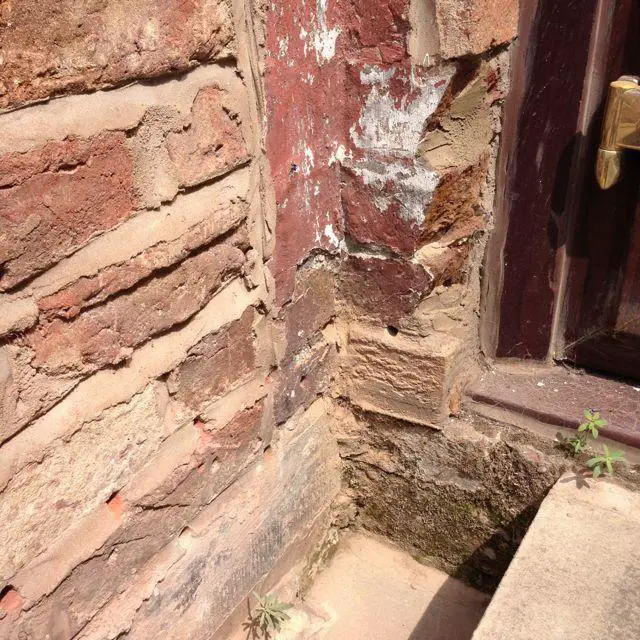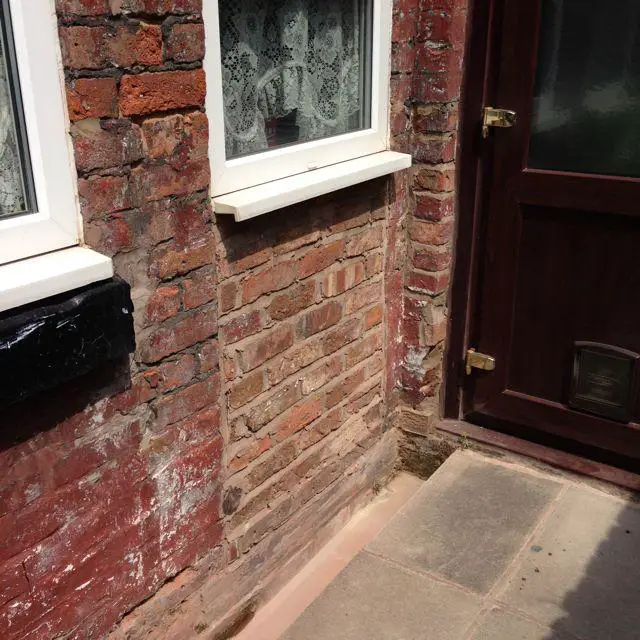Because building contractors source by our insurance company have checked, tested and explained to us that the dpc has failed. They never said bridged.
You are using an out of date browser. It may not display this or other websites correctly.
You should upgrade or use an alternative browser.
You should upgrade or use an alternative browser.
Cutting paving slabs for damp course
- Thread starter petemc
- Start date
Sponsored Links
That's misleading, sadly I've heard it all before, many homes don't have dpc and don't have any problems, And forget about any damp treatments, it's pointless and a waste of money. It's most likely bad design layout as mentioned a photo's will tell us what's wrong.Because building contractors source by our insurance company have checked, tested and explained to us that the dpc has failed. They never said bridged.
From the link below, http://www.heritage-house.org/damp.html
It's almost inevitable that you will find damp in an old house. Nothing lasts forever, but despite the English weather, our old buildings can, and will stand the test of time. The worst enemy of old houses is we humans - it's generally what we do to them, or fail to understand about them, that causes most of the problems and make you think you have to Damp Proof it.
In recent years, so called 'Rising Damp specialists', and building surveyors recommending damp treatment have caused massive, and in many cases, irreparable damage to old buildings through their incompetence. Don't use them. Many of these idiot surveyors are churning out 'Homebuyer Survey' reports with a standard clause in them that recommends 'Specialist Timber and Damp Survey'. You just paid the surveyor for that - so dont pay the bill - he doesnt know what he is talking about.
Did you know that in Holland, they don't even have damp courses? True... Even in new houses, damp proof courses are not required. They build their houses with their feet in the water, and they dont get wet walls. I teach Dutch architectural students at college, and they fall about laughing when we talk about what they call our 'Quaint English Custom' of damp courses and injection damp proofing. Sounds funny, but this is serious stuff - we are being defrauded to the tune of hundreds of millions a year, by chemical companies selling useless, fraudulent treatment.
Hello 
Just want to come back to this and say we've had the trench dug around the house. It works fine and water flows away from the house. Nice 2 - 3 bricks deep trench.
However, we still have a damp issue on the internal wall.
There's been a hammock bag resting against that wall to just above skirting board level for a long time. But other than that its been exposed. The trench was dug about 10 months ago. This wall isn't drying.
Just want to come back to this and say we've had the trench dug around the house. It works fine and water flows away from the house. Nice 2 - 3 bricks deep trench.
However, we still have a damp issue on the internal wall.
There's been a hammock bag resting against that wall to just above skirting board level for a long time. But other than that its been exposed. The trench was dug about 10 months ago. This wall isn't drying.
Sponsored Links
If it's an 1880s house, I expect it was originally build with a wooden ground floor, having a void underneath it that was ventilated by airbricks to keep it dry.
Does it still?
You talk as if water is running down your trench in a stream. Where is it coming from?
Are you in a terrace?
Have you got a water meter?
Show us some more photos
Does it still?
You talk as if water is running down your trench in a stream. Where is it coming from?
Are you in a terrace?
Have you got a water meter?
Show us some more photos
If it's an 1880s house, I expect it was originally build with a wooden ground floor, having a void underneath it that was ventilated by airbricks to keep it dry.
Does it still?
I honestly couldn't say. We had laminate flooring put in and it looked like the floor beneath was just concrete.
You talk as if water is running down your trench in a stream. Where is it coming from?
Ah sorry no. The trench is designed to stream water away from the house. Water isn't continuously running through it.
Are you in a terrace?
Yes.
Have you got a water meter?
No.
Show us some more photos
The orange affected wall is inline with the door.
as you are in a terrace, all the other houses will have been built with the same kind of floor. Try to find out what it used to be. If they were inexpensive houses they might have had flags on earth, especially in the kitchen.
as your wet wall is next to the kitchen I expect you have a leaking pipe.
try to work out where the pipes run and what they are made of.
your neighbours will have had/have/will have pipes of the same age and probably leaks as well.
as your wet wall is next to the kitchen I expect you have a leaking pipe.
try to work out where the pipes run and what they are made of.
your neighbours will have had/have/will have pipes of the same age and probably leaks as well.
as your wet wall is next to the kitchen I expect you have a leaking pipe.
There are pipes behind that orange wall in the kitchen but the kitchen wall is fine. Wouldn't the leaky pipe cause an issue in the kitchen as well?
I'll take a look at the pipes to make sure.
remember that pipes are likely to be laid under the floor.
That doesn't appear to be the case in our house
What would you want to see more photos of?
DIYnot Local
Staff member
If you need to find a tradesperson to get your job done, please try our local search below, or if you are doing it yourself you can find suppliers local to you.
Select the supplier or trade you require, enter your location to begin your search.
Please select a service and enter a location to continue...
Are you a trade or supplier? You can create your listing free at DIYnot Local
Sponsored Links
Similar threads
- Replies
- 0
- Views
- 3K






